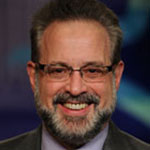HIV Among MSM Examined at CROI
Topics

Dr. Ronald ValdiserriThe ongoing disproportionate burden of HIV/AIDS borne by gay, bisexual and other men who have sex with men (MSM) in the United States as well as around the world was the topic of a number of sessions and posters at the 20th Conference on Retroviruses and Opportunistic InfectionsExit Disclaimer in Atlanta this week.
In a compelling plenary session, The Global MSM HIV Epidemic: Time to ActExit Disclaimer , Chris BeyrerExit Disclaimer, MD, MPH, of the Johns Hopkins University Bloomberg School of Public Health noted that MSM around the world have markedly higher HIV prevalence rates than the general population of reproductive-aged adults. This is true in every region of the world, including sub-Saharan Africa and the Caribbean, which has the highest HIV prevalence rate among MSM. (For more on the global epidemiology of HIV in MSM, see this study published by Dr. Beyrer and colleagues in The Lancet, 2012Exit Disclaimer .)
While HIV incidence data (i.e., the number of new HIV infections) are less available worldwide than are prevalence data (i.e., the number of all persons living with HIV, both new and existing infections), the incidence data in hand suggest that there are stable or rising rates of new infection among MSM around the world, particularly in the last 5 years. As an example, Dr. Beyrer—who is also the President-elect of the International AIDS SocietyExit Disclaimer—shared 5-year cumulative incidence data from a Bangkok, Thailand, cohort of MSM in a recently-published studyExit Disclaimer. Over the course of 60 months, 23% of sexually active Thai MSM of all ages who participated in the study became infected with HIV. Even more alarming, 31% of MSM ages 18-21 became infected with HIV over the same time period. Dr. Beyrer noted that these new infections occurred in a country with good ARV access, where homosexuality is not criminalized, and where the heterosexual HIV epidemic is in decline.
Dr. Beyrer discussed how the high background prevalence of HIV in many MSM communities drives new infections and increases the lifetime likelihood of HIV acquisition among its members. Exacerbating this is the fact that young MSM in the U.S. and in many other countries have the highest rates of new HIV infections, but they are also the least likely to be in HIV care and treatment. Further, structural factors such as discrimination based on sexual orientation or HIV status, criminalization of same-sex sexual practices, and barriers to health-care access for MSM also limit the impact of HIV prevention efforts for these communities. Dr. Beyrer pointed out, however, that modest increases in the use of condoms can have very positive impacts on these epidemics.
To better respond to the global HIV epidemic among MSM, Dr. Beyrer laid out key priorities for further research including working to better understand why current approaches to HIV prevention are not working to optimal levels and improving our understanding of how to lower biological risks for HIV transmission and acquisition. He also urged greater efforts to promote optimal HIV care and continued research in the social sciences, including the development of approaches to intervene against homophobia.
(Read Dr. Beyrer’s CROI 2013 presentation abstract or view the webcastExit Disclaimer of his talk.)
Dr. Beyrer’s address was a compelling reminder of the scope of the HIV epidemic among MSM in the U.S. and its marked racial and ethnic disparities. According to CDC, MSM of all races and ethnicities remain the population most profoundly affected by HIV in the United States. In 2010, the estimated number of new HIV infections among MSM was 29,800, a significant 12% increase from the 26,700 new infections among MSM in 2008. Further, the estimated number of new HIV infections was greatest among MSM in the youngest age group. And when examined by race/ethnicity and age group, in 2010, the greatest number of new HIV infections (4,800) among MSM in the U.S. occurred in young black/African American MSM aged 13–24. Young black MSM accounted for 45% of new HIV infections among black MSM and 55% of new HIV infections among young MSM overall.
Working to address these disparities is an important part of ongoing efforts to implement the National HIV/AIDS Strategy. Recently, HHS convened a consultation from a CDC analysis showing a promising increase between 2008 and 2011 in awareness of HIV infection among MSM in 20 U.S. cities with high AIDS burdens. He and colleagues analyzed data from the National HIV Behavioral Surveillance System, Dr. Gary Harper of the University of Michigan reviewed a range of social-ecological factors that are hypothesized to be fueling the HIV epidemic among gay/bisexual adolescents and other young MSM in the United States. These include social inequalities related to race/ethnicity, sexual orientation, and socioeconomic status; as well as cultural, religious, and other social forces. He urged investment in the evaluation of culturally and developmentally appropriate HIV prevention programs for gay/bisexual male adolescents and other young MSM, with a focus on interventions that counter oppressive socio-cultural forces and build upon the existing strength and resilience of these young men.
We agree with Dr. Beyrer’s observation that the global epidemics of HIV among MSM are an ongoing challenge for all of us and that in order to achieve the goals of the National HIV/AIDS Strategy and PEPFAR’s Blueprint for an AIDS-Free Generation, “we have to do much more and much better for gay, bisexual, and other MSM.” This will require ongoing attention to systems of prevention and care for MSM, prioritization of research needs to improve health outcomes for these populations, and continued efforts to promote consistent and correct condom use as a means of preventing HIV transmission.